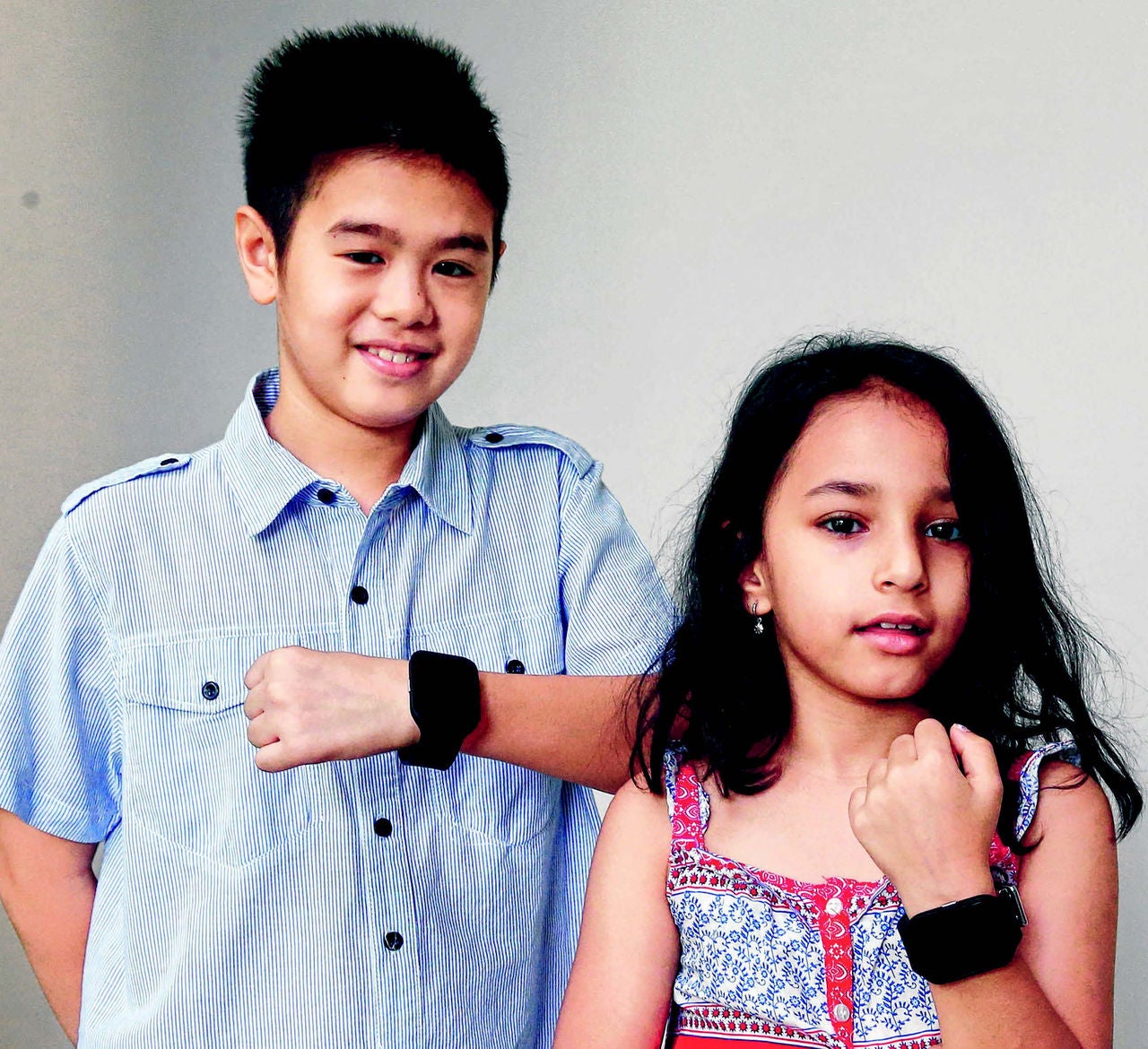
It is meant to encourage children to spend more time outdoors, which is said to reduce the incidence of myopia. ST PHOTO: CHEW SENG KIM
Smartwatch tracks the amount of time spent in the sun
A new smartwatch may help to prevent myopia in children.
FitSight displays the amount of time users spend in the sun each day – which is believed to reduce the incidence of myopia, or short-sightedness.
Targeted at children aged six to 12, the watch has a light meter that tracks light intensity of their surroundings, which is then translated into hours and minutes.
Last month , Professor Saw Seang Mei, head of myopia research at the Singapore Eye Research Institute, embarked on a two-month study involving 100 children of primary school age to test the first prototype. Half of the group wear the watch as they go about their daily activities and all participants will answer questions on behavioural change during the trial.
Prof Saw hopes the device will encourage children to spend at least three hours a day outdoors. Those who achieve this will get a gold badge on the smartwatch’s phone app. Consistently hitting this target will earnthem a platinum badge.
Singapore has one of the world’s highest myopia rates: About 80 per cent of 18-year-olds are shortsighted.
Prof Saw said about 10 per cent of children aged between six and 72 months are short-sighted, and “if a primary school child becomes myopic, the chance of them developing high myopia later on is high”.
High myopia refers to short-sightedness beyond 600 degrees.
It raises the risk of other eye conditions such as retinal detachment or macular degeneration.
Exposure to sunlight is believed to reduce the rate of myopia because it encourages the body to produce chemical dopamine. This helps to prevent the eyeball from becoming elongated, which causes the condition.
Results from a study by the Sun Yat-sen University in Guangzhou, published in September, show that children who spent an additional 40 minutes outdoors every school day for three years had a 23 per cent reduction in the incidence of myopia. The study tracked more than 1,900 six-year-olds from 12 schools between 2010 and 2013.
Prof Saw started studies measuring light intensity in different conditions – such as direct sunlight and under shade – about two years ago. On a sunny day, light intensity outdoors can go up to 100,000 lux and beyond (a unit for illuminance). Indoors, this is about 200 to 500 lux.
She worked with two engineers, Dr Zhang XinQuan and Dr Pu Suan Hui, to invent the wristband and its app, allowing parents of young users to track their progress.
It can be hard to be outdoors as children spend most of their “daylight hours” in school, said Dr Ivan Tham, whose 10-year-old son Joshua is participating in the study.
Consulting director Harish Kelath, whose 11-year-old son and six-year-old daughter are also participating, said of their response: “They are far more aware that they need to spend time outside. There is healthy competition. Once you have a community to compare with or if there are leaderboards online, that also helps.”
Contributed by

English
The Straits Times - New way to look after children’s eyes.pdf














 Get it on Google Play
Get it on Google Play